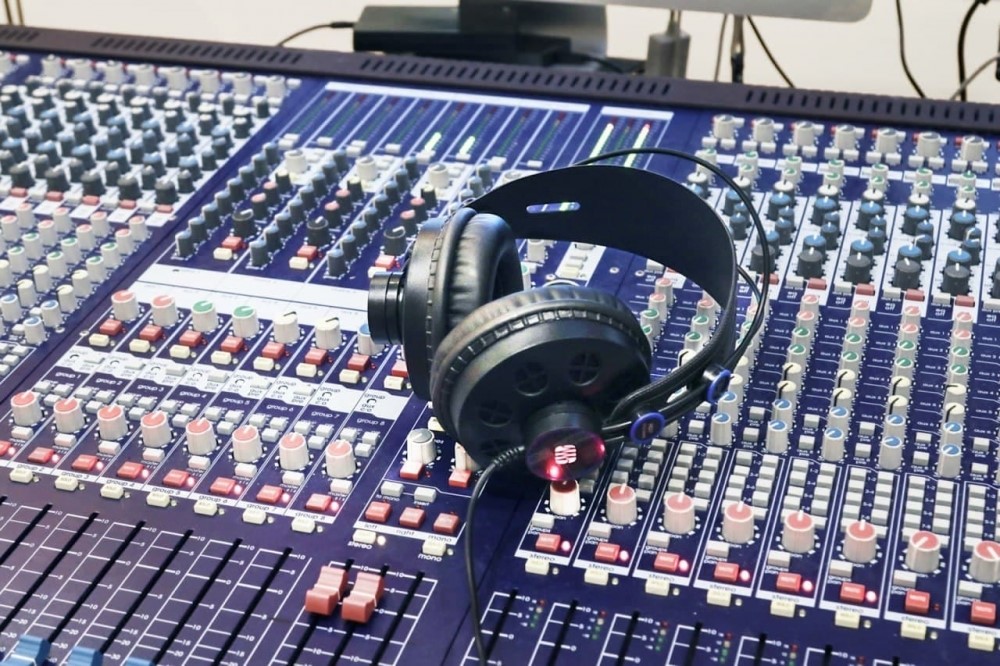In this article, we’ll tell you what an arrangement of a piece of music is in simple terms, compare examples before and after, and break down styles of music. The article will be understandable to everyone, even if you have never worked with music, but have done garage door repair like the company GTA Garage Door Repair – https://garagedoorrepairon.ca/.
WHAT IS A SONG ARRANGEMENT IN MODERN MUSIC?
Arranging is the music accompanying a song, reworking and composing new instrument parts, as well as determining the genre of the future composition. In simple words, the essence of arranging is to write the music that sounds in the final composition. Today it is the music that determines by 50% whether a song will be popular or not, because the melody should be recognized from the first seconds of any song or composition.
Arrangement is the next step, after the songwriter has written the song. Initially, the composition has a primitive form, such as: accompaniment on piano or guitar accompanying the vocals. Often, it is in this form arrangers receive the song from the authors to create and compose music for the work. Their task is to find the right style for the composition, to compose the instrument parts so that they would complement the vocals to reveal the musical idea of the composition, as well as to compose for the listener memorable party instruments.
WHAT DOES ARRANGING INCLUDE AND BELONG TO?
The arranger’s task includes:
- Composing or refining the harmony of the composition
- Composing a melody for the instrument parts
- Creating the rhythmic part of the song (drums, percussion, noise instruments)
- Composing the bass, rhythm and solo instruments
- Selection of additional instruments and their harmonious combination in order to correctly convey the author’s idea.
If necessary, transfer the musical work into orchestration and instrumentation.

WHAT IS IMPORTANT IN ARRANGING A PIECE?
The most important point is to find a professional arranger, because it is his vision that defines the genre and “hit” quality of your future song. How can an arranger help you?
- Rework or refine the harmony of the song so that it sounds modern.
- Find a musical style that works for your song.
- Determine a contemporary form for your song.
- Compose all instrument parts, both rhythmic and solo
- Design a sound design for the song that distinguishes it from other songs
Often authors and composers write only lyrics, chords and vocal melody (topline) and leave the work on the musical arrangement to professionals. Arranger chooses the style in which the future composition will sound by himself or discusses it with the author of the song.
WHAT IS THE DIFFERENCE BETWEEN ARRANGING AND ORCHESTRATION AND INSTRUMENTATION?
It allows you to add new instrument melodies, change the harmony of the song, and change the tempo and duration of the music.
Orchestration is the arrangement of a piece of music onto instruments in the same section of an orchestra. For example: you have a common string part in the music. Once the part is orchestrated, it will be played by an entire section of the orchestra allocating it to the violin, viola, cello, and double bass. In this way, all the parts of the composition are transcribed and your song can be played by an entire orchestra. Translating music into orchestration is a fairly popular topic with popular artists today. Instrumentation is the selection of musical instruments for the subsequent performance of a composition.
In this case, the musicians do not change the parts of the instruments, but play the melody written by the author or composer. In simple words, they play from the sheet of music, the parts that the arranger finalized in the final version of the song.
A remix is a change in tempo and genre of music, a selection of new sounds and instrument parts. A remix can be made in any genre of music, dramatically differing from the original. In part, a remix can also be considered a rearrangement. Remixes are important for any artist, as they can capture a different audience of listeners.
WHAT ARE THE PROBLEMS IN CREATING AN ARRANGEMENT?
A common mistake when creating music is not knowing or following the basics of arrangement writing. Below we will look at the most common problems that arrangers make.
Not adhering to the musical genre.
Often, arrangers add instruments and sounds to their compositions that don’t fit the style of music. For example: in the POP music add a drum from the EDM style, or bass from Future bass, it makes the sound not professional level.
Not the modern form of the song.
Song structure and trends change every year. It is important to follow these trends, because songs with an intro of more than 15 seconds, is no longer perceived by the listener.
Instruments are not chosen for their frequency characteristics.
Many arrangers make this mistake thinking that it is solved at the stage of mixing, but it is not so. Let’s take the example on the error of frequency overlapping of Hi-Het and shaker.
It may not seem like a big deal, but if you make such mistakes on all instruments, for example: the bass drum sounds pure bass or the piano plays the same octave as the guitar, you will have a “musical mess”. If you correctly match the sound of the instruments in terms of frequency characteristics, you will have a clean and balanced sound of the arrangement, which is pleasant to the ear.
Draft instrument balance.
Often, arrangers send material to a sound engineer for mixing without a rough mix. This mistake isn’t critical, but it’s important if you’re not mixing the song yourself. Arrangers think it should be done by the sound engineer in mixing the track, but it’s not. The mix engineer should understand the artistic intent of the songwriter and only emphasize his idea on the processing of the song. If you don’t, the sound engineer may bring the song down to his or her own liking, bringing the wrong instruments to the forefront.

7 BASIC RULES TO MAKE A GOOD ARRANGEMENT
- Determine the style.
Before writing an arrangement for a piece of music, first determine the style in which you will be working. If you don’t do it right away, it will be a long process and you won’t arrive at a specific genre just going through melodies and sounds of different instruments. If you’re just starting out as an arranger, the right thing to do before making music is to identify and analyze reference tracks (songs where the arrangement is similar to what you want to end up with).
- The most important thing is the vocals.
Vocals are an instrument too, so arrange the other parts so that they complement the rhythm of the vocal and sound like an accompaniment rather than a solo instrument. Unfortunately, it’s a common mistake beginner arrangers make when the parts conflict with each other for the foreground.
- Define the foundation.
Properly define the foundation of the arrangement. For example: in rock music, this would be the drums, bass, and rhythm guitars. In modern dance music, it would be the rocking rhythm section, the part and the bass sound. In other words, your job is to emphasize the rhythm and melody of the vocals, as it is the foundation of the arrangement that makes the song one with the music.
The right foundation of the song, will help the listener pay attention to the most important thing in the music. How do you determine the foundation of a song? Roughly speaking, if you remove the main instrument, the song loses its intent and idea.
For example: if in the song Benny benassi – Satisfaction, if you remove the bass or replace it with another, the whole idea of the song will be completely lost.
Only after determining the foundation of the track, add secondary instruments and effects. These sounds and parts should only complement the main idea of the song and be in the background.
- Don’t overcomplicate it. As the German composer Johannes Brahms wrote – “Composing is not so difficult; crossing out the extra notes is what is most difficult.”
Everything brilliant is simple! Keep this in mind when creating an arrangement. Music and basic melodies should be easy to remember from the first notes and stay in the listener’s memory.
- Use modern sample libraries and sounds.
- Processing.
Use instrument processing when working on a song, since some effects are determined by the arranger at the creation stage, not the sound engineer during mixing.
- Track Shape.
Use a modern form of composition, as for 2022, structure has a crucial factor when creating music.
